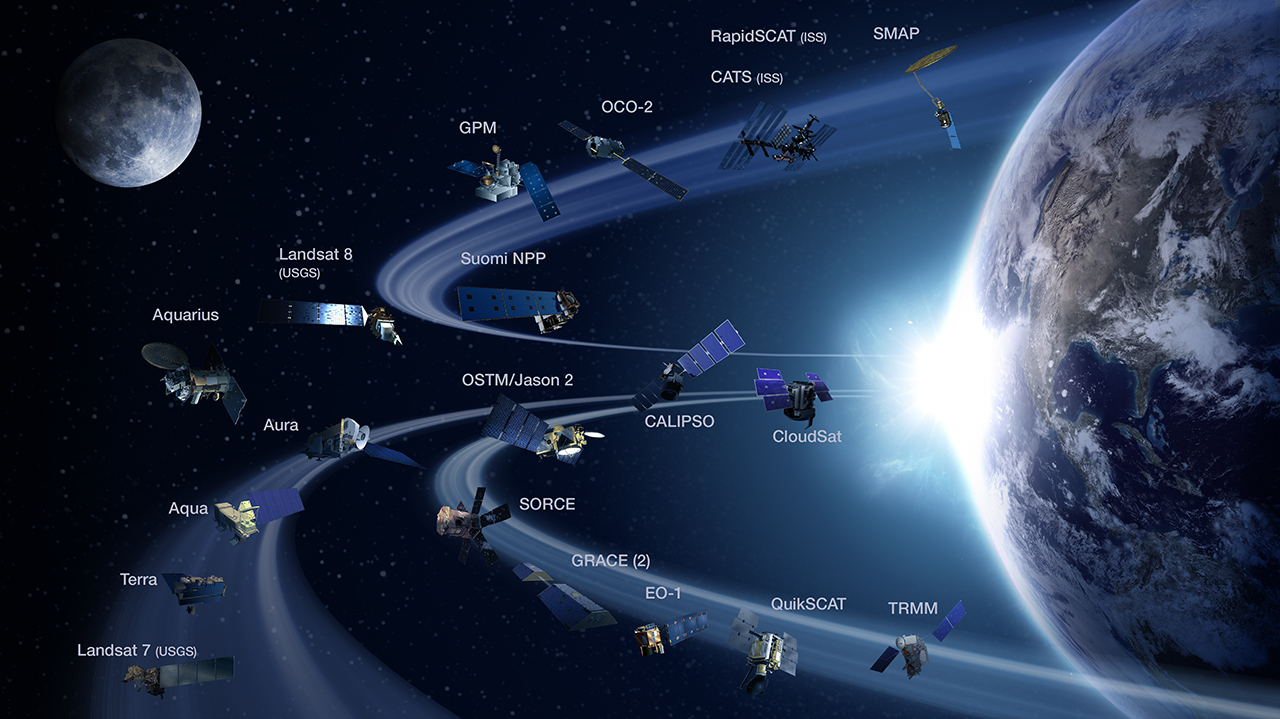
Eyes in the sky, Earth Observation Satellites monitor environmental conditions by reporting hot spots and testing efforts to mitigate climate change. OHB-System has just signed a contract to build a new satellite network to monitor carbon dioxide, helping countries achieve goals of the COP 21 Paris Agreement. Part of the Copernicus System, the first OHB spacecraft will launch in 2025; it will be called CO2M.

CO2M will join the European Union’s Copernicus Earth Observation program, a system of satellite sensors called Sentinels that watch the Earth from space. Marco Fuchs, CEO of Germany’s OHB-System, oversees the contract with the European Space Agency. Thales Alenia Space (TAS), a French-Italian company, is a sub-contractor, designing carbon dioxide and nitrogen dioxide spectrometers. Belgian partner, OIP Sensors, will provide a cloud imager. CO2M will track carbon dioxide to a resolution of 2km by 2km across a span of 250 km. Satellites will carry both a CO2 detector and also secondary sensors that can differentiate between human-produced emissions and those occurring naturally.
Looking for employment or investment opportunities? Check out satellite enterprises: OHB, TAS, OIP.
Since COMSAT launched the first communication satellites, space has become the place that allows us to transmit video, communication, and weather information about Earth. NASA and ESA (European Space Agency) are leaders. Here’s a look at NASA’s program:

ESA’s Sentinel satellite system is comprehensive, and will expand when CO2M joins the initiative. For now, here’s the Sentinel array and specific capabilities:
Sentinel-1: monitor Earth’s surface in all weather conditions
Sentinel-2: monitor land changes
Sentinel-3: observe oceans
Sentinel-4: measure atmospheric gases
Sentinel-5: monitor air quality
Sentinel-6: measure rising seas
When CO2M becomes operational, joining the Sentinel series, it will track CO2 around the whole globe every five days. CO2M’s data, along with other Sentinel reporting, and NASA’s initiatives as well as others, will help meet the climate goals established by COP21 also known as the Paris Agreement. The Eiffel Tower displayed the message: now we must meet the goals. Space, looking at Earth, can help.

If you are interested in learning more about Earth Observation Satellites, join the Copernicus Academy’s MOOC, beginning in September 2020.
Amos, Jonathan. “European Sentinel satellites to map global CO2 emissions.” 1 August 2020, BBC.com.
Copernicus Earth Observation System. https://www.copernicus.eu/en
Copernicus Academy, 160 members fromthe EU 28 plus Iceland and Norway, sharing research and providing training on Earth Observation. Join the MOOC starting in September 2020.https://www.copernicus.eu/en/opportunities/education/copernicus-mooc
OHB Magazine. https://www.ohb.de/en/magazine/
NASA, Edited by Andrew J. Butrica. “Beyond the Ionosphere: Fifty Years of Satellite Communication.” National Aeronautics and Space Administration, 1997. https://history.nasa.gov/SP-4217/sp4217.htm
Building the World Blog by Kathleen Lusk Brooke and Zoe G. Quinn is licensed under a Creative Commons Attribution-NonCommercial-NoDerivs 3.0 Unp
